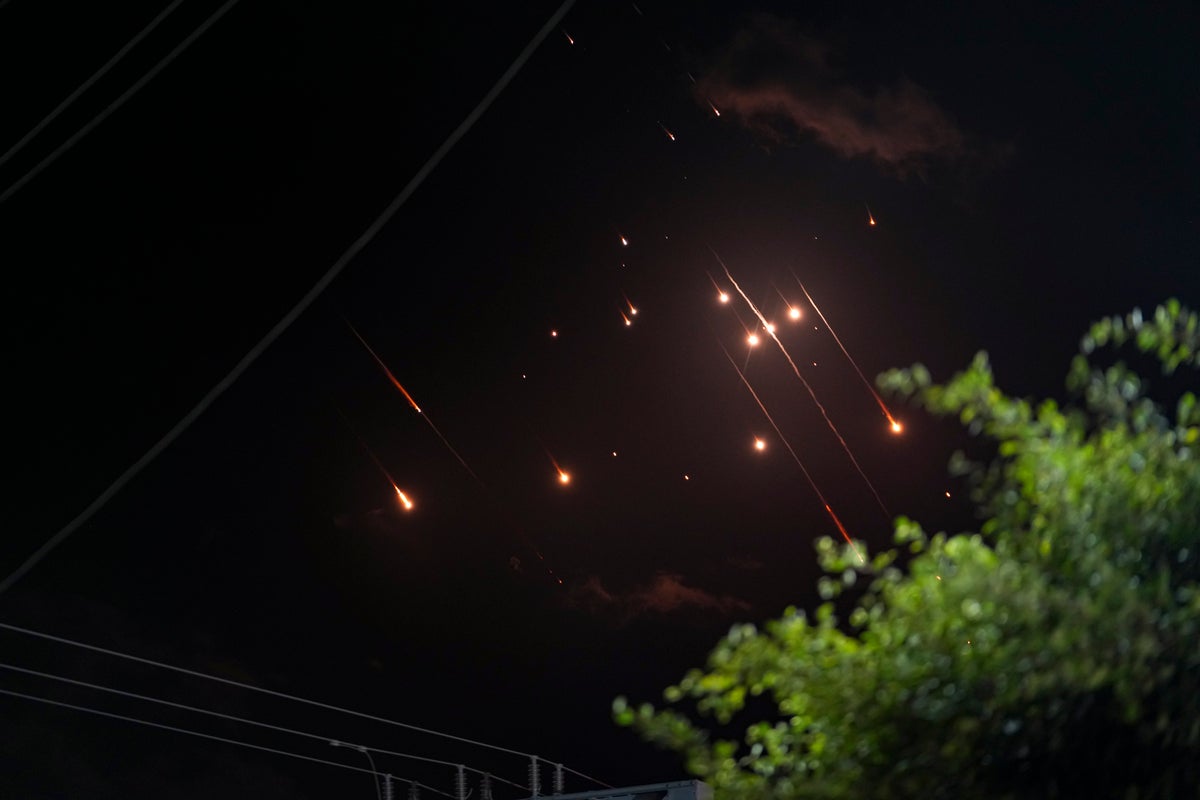
Your support helps us to tell the story
Israel's multilayered air-defense system appears to have passed another test after fending off Iran's latest missile barrage.
In Tuesday's night's strike, Iran fired over 180 missiles toward Israel. The attack set off air raid sirens across the country and sent residents scrambling for shelter, but caused only a handful of minor injuries and limited damage, in large part because many were intercepted or landed in open areas.
It was the latest success for an air-defense system that over the past year has intercepted projectiles fired from Gaza, Lebanon, Syria, Iraq, Yemen and Iran. They have ranged from short-range rockets to medium-range missiles to attack drones to long-range ballistic missiles like those fired Tuesday night.
In Tuesday's attack, the U.S. and Britain said they assisted in shooting down the incoming missiles. Explosions also were seen over the skies of Jordan, though it remains unclear who carried out the interceptions.
But the vast majority of Israel's air defense over the past year has been carried out by Israel itself. Over the decades, Israel has developed a sophisticated system capable of detecting incoming fire and deploying only if the projectile is headed toward a population center or sensitive military or civilian infrastructure. Israeli leaders say the system isn't 100% guaranteed, but credit it with preventing serious damage and countless casualties.
Here’s a closer look at Israel’s multilayered air-defense system:
The Arrow
This system developed with the U.S. is designed to intercept long-range missiles, including the types of ballistic missiles Iran launched on Tuesday. The Arrow, which operates outside the atmosphere, has also been used in the current war to intercept long-range missiles launched by Houthi militants in Yemen.
David’s Sling
Also developed with the U.S., David’s Sling is meant to intercept medium-range missiles, such as those possessed by Hezbollah in Lebanon. It has been deployed on multiple occasions throughout the war.
Iron Dome
This system, developed by Israel with U.S. backing, specializes in shooting down short-range rockets. It has intercepted thousands of rockets since it was activated early last decade – including thousands of interceptions during the current war against Hamas and Hezbollah. Israel says it has a success rate of over 90%.
Iron Beam
Israel is developing a new system to intercept incoming threats with laser technology. Israel has said this system will be a game changer because it would be much cheaper to operate than existing systems. According to Israeli media reports, the cost of a single Iron Dome interception is about $50,000, while the other systems can run more than $2 million per missile. Iron Beam interceptions, by contrast, would cost a few dollars apiece, according to Israeli officials — but the system is not yet operational.







